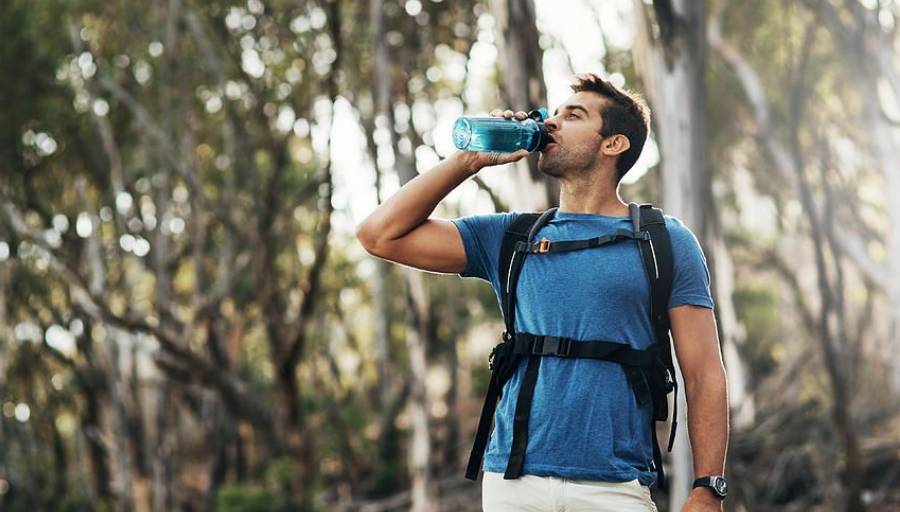How to Clean Trail Running Shoes

Maintaining the optimal condition of your trail running shoes is essential for longevity and peak performance. After navigating challenging terrains and facing the inevitable mud and dirt, ensuring proper cleanliness becomes a priority. In this article, I’ll share valuable tips on cleaning and maintaining your trail running shoes, helping you extend their lifespan and keep them in top-notch condition.
How to Clean Trail Running Shoes: Exit the Washing Machine!
Cleaning trail running shoes doesn’t require rocket science; a basin of hot water, soap, and a soft brush (or an old toothbrush) will do the trick! Remember to wash the laces separately. Begin by immersing both trail shoes in the soapy water.
To tackle the stubborn remnants, soak your trail running shoes in soapy water to remove dried mud, pebbles, and other debris. Allow them to soak for a few minutes if needed. When adequately soaked, it’s time for the brush. Exercise caution not to brush too vigorously to prevent damaging the mesh. Take it slow and focus a bit more on stubborn dirt in seams or between the sole and the mesh.
For drying, let the sneakers air-dry quietly for 12 to 24 hours. If you’re a daily runner, consider having a second pair and stuff the shoes with newspaper during drying. This helps absorb residual moisture effectively and maintains the shoes’ shape.
Additionally, after cleaning and rinsing, don’t forget to remove the sockliner and stuff the shoes with newspaper for thorough drying. This ensures that both the interior and exterior of the shoes are well-ventilated and ready for your next trail adventure.
What About Machine Washing?
It’s true that it’s tempting to put your trail running shoes in the washing machine, and yet… I strongly advise against it! The heat from the washing machine can potentially melt the glue that holds the shoes together or deform any plastic components. This approach is a surefire way to accelerate wear and possibly lead to the premature destruction of your favorite pair.
Cold washing may avoid the risk of melting or deformation due to heat, but it comes with its own set of issues. Firstly, the washing is likely to be ineffective in thoroughly removing stubborn dirt. Moreover, the shocks against the washing machine drum during the cycle can potentially damage both the shoes and the machine.
In summary, relying on good old elbow grease, using manual cleaning methods, is the most effective and safe way to maintain the condition of your trail running shoes without risking damage.
Shoe Care: Dusting, Airing, Waterproofing
Unlike trail clothing, you don’t need to clean trail running shoes after each outing. There is still a minimum to do between two runs! The simplest reflex to adopt is to tap the two shoes against each other or against the ground to loosen the dried mud and dust.
As you can imagine, you have to hit the sole well so as not to damage the mesh. If the stuck earth is still too wet to come off on its own, rinsing the sole with water will do just fine. A quick brush stroke is also always welcome!
To eliminate humidity and unpleasant odors, another important step is ventilation. Nothing very complex for that: loosen the laces to lift the tongue as much as possible and widen the opening, then leave the sneakers in the open air for a few hours (protected from the rain).
To go further in the maintenance of the inside of the shoes, consider using removable insoles. These insoles are not only easier to take out and clean than the original ones but also offer the added benefit of enhancing comfort.
Finally, if moisture tends to infiltrate during a trail run in the rain, it is time to think about (re)waterproofing your shoes. Take a waterproofing spray and spray it all over the mesh. This is an operation to be repeated regularly, especially if your model is not waterproof. There you go, you know everything to get off to a good start..!
Conclusion
Nice and clean, your well-maintained trail shoes will be a treat to wear. In addition to the good look, it is above all hygiene that counts in combating bad odors and limiting the risk of infection. The three key points to remember to clean trail running shoes:
- Trail running shoes need regular maintenance.
- Wash your trail shoes by hand with water and Marseille soap.
- They must be allowed to dry in the open air, away from a direct heat source.
Frequently Asked Questions
Can I put sneakers in the washing machine or the dryer?
If household appliances are there to help us, they are not really compatible with the materials used to make running shoes. The problem with the washing machine and the dryer is twofold. These devices subject running shoes to high temperatures that can melt certain plastics, warp the sole, or loosen the glue that holds the structure together. On the other hand, the rolling of the drum produces shocks that are harmful to the shape of the shoes.
How do I deal with stubborn dirt on my trail running shoes?
Soak your shoes in soapy water for a few minutes to loosen stubborn dirt. Use a soft brush or an old toothbrush to gently scrub, then focus on seams and areas where dirt may be lodged.
Can I dry my trail running shoes in the dryer?
It’s not recommended to use a dryer, as the heat can damage the shoe’s materials. Instead, let them air dry at room temperature. Stuffing the shoes with newspaper can help absorb moisture.
Can I use a pressure washer to clean my trail running shoes?
It’s not recommended to use a pressure washer, as the high-pressure water can damage the shoe’s materials and compromise their performance. Stick to gentle hand washing methods for the best results.




